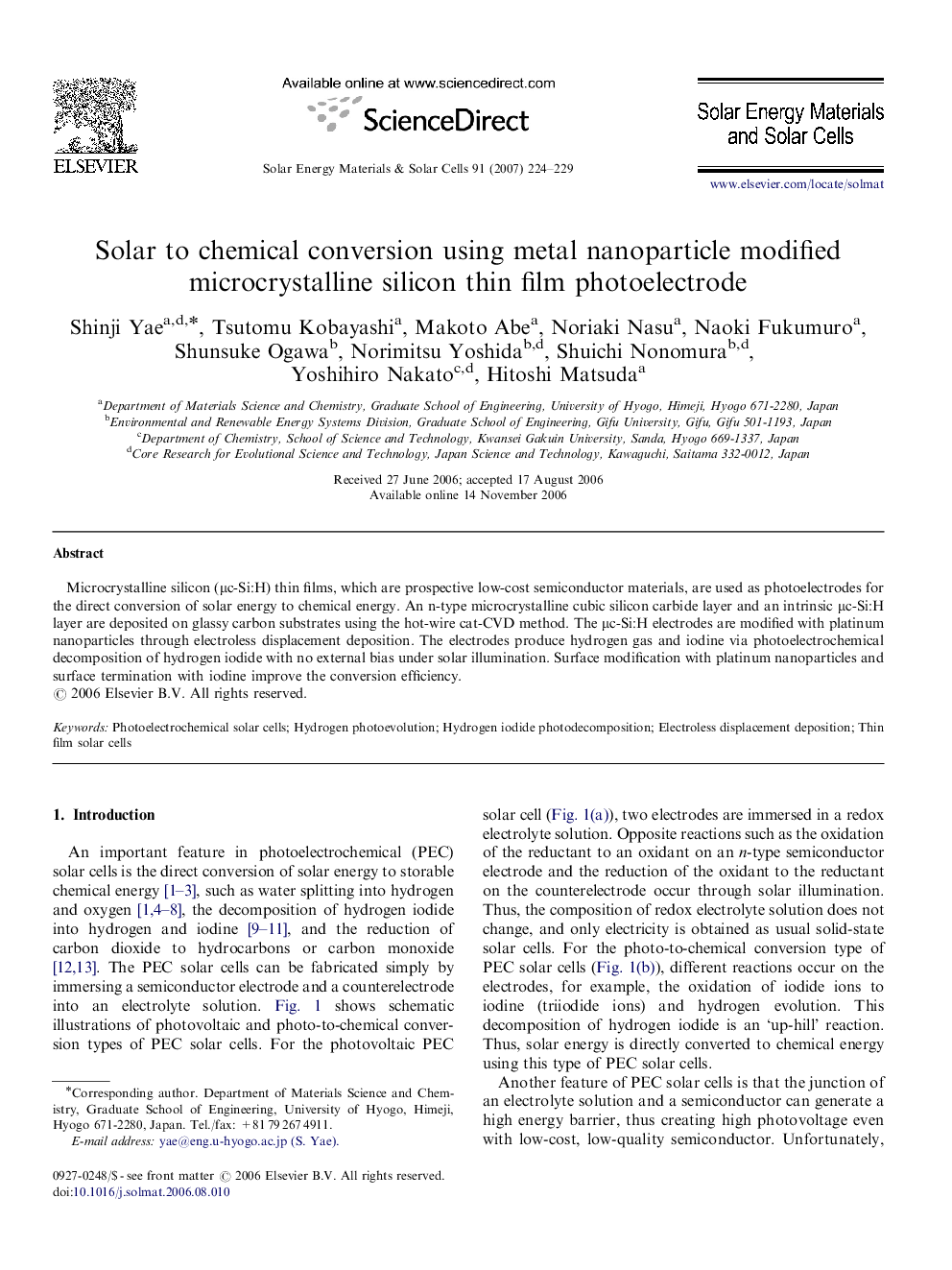| Article ID | Journal | Published Year | Pages | File Type |
|---|---|---|---|---|
| 80746 | Solar Energy Materials and Solar Cells | 2007 | 6 Pages |
Abstract
Microcrystalline silicon (μc-Si:H) thin films, which are prospective low-cost semiconductor materials, are used as photoelectrodes for the direct conversion of solar energy to chemical energy. An n-type microcrystalline cubic silicon carbide layer and an intrinsic μc-Si:H layer are deposited on glassy carbon substrates using the hot-wire cat-CVD method. The μc-Si:H electrodes are modified with platinum nanoparticles through electroless displacement deposition. The electrodes produce hydrogen gas and iodine via photoelectrochemical decomposition of hydrogen iodide with no external bias under solar illumination. Surface modification with platinum nanoparticles and surface termination with iodine improve the conversion efficiency.
Related Topics
Physical Sciences and Engineering
Chemical Engineering
Catalysis
Authors
Shinji Yae, Tsutomu Kobayashi, Makoto Abe, Noriaki Nasu, Naoki Fukumuro, Shunsuke Ogawa, Norimitsu Yoshida, Shuichi Nonomura, Yoshihiro Nakato, Hitoshi Matsuda,
